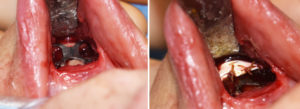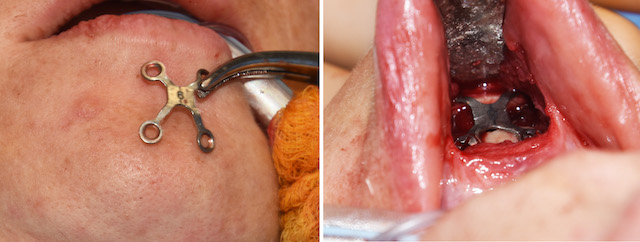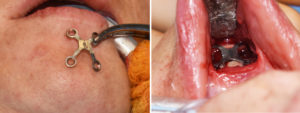Background: Chin augmentation is most commonly done by the placement of an implant on the end of the bone. Its primary objective is to provide a horizontal increase of the most anterior chin projection point, the pogonion, as best seen in a profile view. Such horizontal chin implants today most commonly have long lateral extensions or wings to provide a smooth transition into the side of the jawline and are known as extended anatomic chin implants.
This horizontal style of chin implant usually works well in men because the added chin width is an aesthetic bonus to the needed horizontal projection of their short chin. But this change is not always seen as a positive for some women. Since many women prefer a more narrow or tapered chin, a wider chin can be a very troubling tradeoff for the increased horizontal projection. This concern is far more prevalent amongst women than many plastic surgeons realize.
While the horizontally short chin is easy to recognize and treat, a vertical chin deficiency is often overlooked. While a chin that has adequate horizontal projection but vertical deficiency does occur, it is far more common to have a chin deficiency that is a mixture of both horizontal and vertical deficiency. In these patients the concept of vertical chin elongation is one of a 45 degree projection bringing the chin down and forward. Few standard chin implant styles exist to do so and, short of a custom design chin implant, only a form of a sliding genioplasty can achieve that type of chin augmentation dimensionally change.


Some short chins are more than just weak in their projection. They may also be vertical short as well which can be diagnosed by a distortion of the lower face vertically as well as having a low angulated or flat mandibular plane angle. It is a type of chin deficiency that is frequently overlooked and subsequently receives the wrong type of chin augmentation procedure. Such chins are best treated by a vertically elongating sliding genioplasty or a custom chin implant design.
Case Highlights:
1) The vertically short chin and lower face does not respond aesthetically well to a horizontal style chin implant.
2) Vertical elongation of the short chin in isolated chin augmentation is best done with a opening wedge bony genioplasty.
3) An extended anatomic chin implant is females often creates an unaesthetic widening of the chin in the frontal view.
Dr. Barry Eppley
Indianapolis, Indiana





